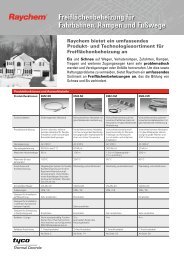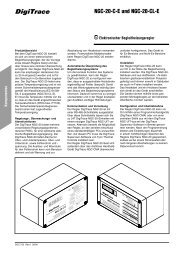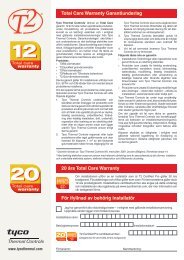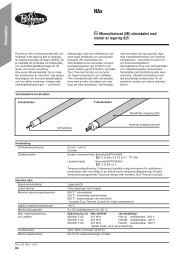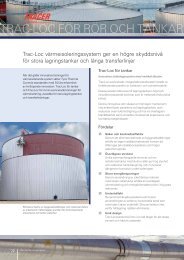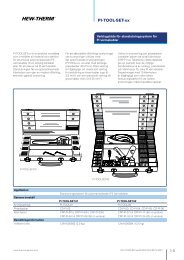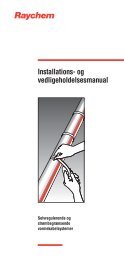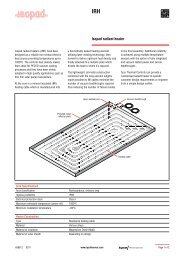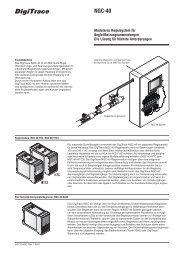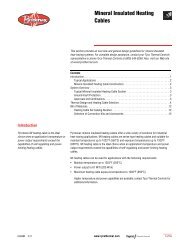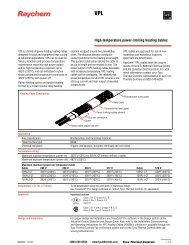Installation, Maintenance and Operation Manual - Tyco Thermal ...
Installation, Maintenance and Operation Manual - Tyco Thermal ...
Installation, Maintenance and Operation Manual - Tyco Thermal ...
You also want an ePaper? Increase the reach of your titles
YUMPU automatically turns print PDFs into web optimized ePapers that Google loves.
6.2 Insulation related requirements<br />
D Correct temperature maintenance requires properly installed<br />
<strong>and</strong> dry thermal insulation.<br />
D Check that all pipework, including fittings, wall penetrations<br />
<strong>and</strong> other areas are completely insulated<br />
D <strong>Thermal</strong>ly insulate <strong>and</strong> weatherproof to design specification.<br />
D Polymeric heating cables need to be protected against<br />
mechanical damage. Metallic insulation cladding is<br />
considered as sufficient mechanical protection.<br />
D Ensure that heating cable is not damaged during installation<br />
of cladding by drills, self tapping screws <strong>and</strong> sharp edges of<br />
cladding etc.<br />
d In all stabilised design cases, the characteristics of the<br />
installed thermal insulation (material <strong>and</strong> thickness)<br />
must comply with the design requirements <strong>and</strong> be<br />
verified <strong>and</strong> confirmed in the documentation, to ensure<br />
compliance with approvals requirements.<br />
d Make sure, that under no circumstances any insulation<br />
material is being placed between heated surface <strong>and</strong><br />
cable, thus disabling intended heat flow to the substrate,<br />
which may result in possible overheating of the cable.<br />
D Good practise requires wrapping of the installed heating<br />
system with an appropriate metal foil prior to installation of<br />
the thermal insulation. This is especially so at places where<br />
intimate contact between trace heating cable <strong>and</strong> heated<br />
surface is not possible, such as valves or flanges where a<br />
suitable heat sink of temperature rated metal foil may be<br />
used.<br />
Details may be described in local insulation st<strong>and</strong>ards.<br />
D Check that all insulation entry kits are fitted correctly or that<br />
other alternative protective devices (such as rubber profiles<br />
G-02) are used, where appropriate.<br />
D Ensure that all places are sealed where thermostat capillaries,<br />
sensor cables or support brackets etc. exit the cladding.<br />
6.3 Marking<br />
D Install "Electric Traced" signs on the insulation cladding<br />
along piping at suitable intervals (3-5 m intervals recommended)<br />
on alternate sides as a warning.<br />
D Mark on outside of insulation the location of any heating<br />
cable components like connection points, splices etc.<br />
19



